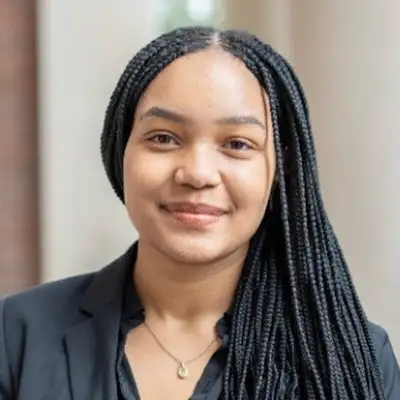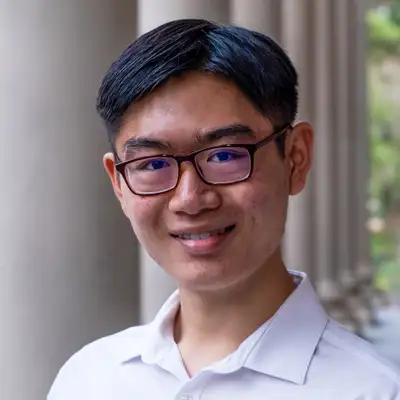Creators and Guests
What is The Unabomber: The Man, the Myth, and the Manifesto?
From The Harvard Crimson’s Fifteen Minutes Magazine, writers Jem K. Williams '25 and Maya M. F. Wilson '24 take a closer look at the public image of the Unabomber. The serial bomber, caught in the 1990s, continues to remain a fixture in the imaginations of countless podcast hosts, documentary makers, and journalists — why? As they break down the common stories used to explain his path to violence and examine the aftershocks of the publication of his manifesto, they’ll explore the dark spaces of the internet, the true crime industry, and the responsibility of the media as a whole.
|| Winner, 2023 Society of Professional Journalists Mark of Excellence Awards for Narrative Podcast ||
Producer - Frank S. Zhou '26
Editors - Amber H. Levis '25, Io Y. Gilman '25, and Frank S. Zhou '26
Fact-Checker - Sammy Duggasani '25
Original score by - Benjy Wall-Feng '25
Cover Design by - Sami E. Turner '25
Other editors include -
Managing Editor Brandon L. Kingdollar '24 and Associate Managing Editor Meimei Xu '24
With help from -
Joey Huang '24, Jina H. Choe '26, Sedina A. Ackuayi '25, and Charles Fishman '83, with special thanks to Joey Huang.
Photos courtesy of “Every Last Tie.”
Audio recordings of New York Times headlines, Alston S. Chase ’57’s article in The Atlantic, and Ted Kaczynski’s writing are recreations, not original recordings.
CONTENT WARNING: This podcast contains description of murder, discussion on mass murder and terrorism, strong language, and discussion of discrimination against transgender individuals. Listener discretion is advised.
MMFW: What do you get when you mix Harvard, homemade bombs, and a deep-seated fear of technological advancement?
JKW: A serial killer. Or, an oversimplification. This is the story of a Harvard graduate. A serial bomber. And the audience that watched him.
MMFW: His name is Ted Kazcynski. The Unabomber.
JKW: I’m Jem Williams.
MMFW: And I’m Maya Wilson. And this is: The Man, The Myth, and The Manifesto.
JKW: Dec. 9, 1994. It was a Friday. The bomb arrived in an ordinary package on the doorstep of Thomas Mosser’s family home in New Jersey. Mosser’s wife received the package that day, and she left it on the kitchen table. That night, Friday night, one of their neighbors had a party, and a group of kids wandered over to the Mossers’, probably to get away from the adults. One of their daughter’s friends, a 13-year-old named Robin, spent the night at their home.
MMFW: The girls were all in the house the next day when the bomb went off in the kitchen. The windows of one side of the house were blown out. Shattered. Glass scattered across the yard. And in the house, their father was dead.
JKW: The bombing was horrific, but seemingly random: why target a hardworking man, a dependable father? The Unabomber chose his targets carefully: university professors, airports, corporate executives. The only pattern? Ted saw his targets as criminals. Criminals who let technology run unchecked. Whose actions were destroying the environment and the world. Ted was an intellectual killer, a political killer. And Mosser was a perfect target. Just days earlier, Mosser had been promoted to the general manager of Young & Rubicam, a global marketing agency. The way Ted saw it, Mosser was a criminal.
MMFW: People who lived through the bombings remember them well. They remember the paranoia and anxiety that took over America — its neighborhoods, offices, college campuses – over the 17-year mail bombing campaign. They remember people got their mail scanned for years, terrified to open any mystery parcel. They remember that more than 20 people were injured. Three people were killed. They remember the New York Times headlines:
FSZ: “United Airlines Chief Seriously Hurt in Blast From Package-Bomb; Four Groups Investigating;” “Mystery Bomber Sent Taunting Letter to Victim at Yale, F.B.I. Says;” “BOMBING IN NEW JERSEY: THE SUSPECT; Meticulous in Building His Bombs, Fastidious in Remaining At Large.”
MMFW: And they remember how nothing like it had ever happened before. How even the FBI was stumped.
JKW: They remember the day the Washington Post published the Unabomber Manifesto: the document that spilled the secrets behind it all. 35,000 words, printed as an insert, its own separate leaflet tucked inside the newspaper.
MMFW: Sept. 22, 1995, was an unusually warm day for Cambridge in the fall. It was even more unusual to see a serial killer’s manifesto in the Washington Post.
JKW: And so they might also remember the day the FBI lured him out of his cabin in Montana five months later. April 3, 1996. At Harvard, it was an otherwise ordinary spring day. But not for The Unabomber — once again on the front page of the papers — but this time without his anonymity, his pen name, and his rambling intellectualism. The Washington Post headline that day read: “UNABOMBER SUSPECT IS DETAINED IN MONTANA.” No more hiding. Just Theodore J. Kaczynski ’62 — his scruffy mugshot a pathetic, eerie emblem. In the months to come, his image would return. Ted pleading guilty, avoiding the death sentence, and receiving eight consecutive life sentences.
MMFW: But, what brings him to mind today? That’s less obvious. The name might ring a bell, but the details are less clear. You might’ve seen one of the movies that feature him or listened to a podcast about him.
JKW: But for some people, seeing Ted in the media sparked more than passing fascination. It sparked a fixation. A sense of resonance. A movement, a purpose. A figurehead.
MMFW: People have made the Unabomber into many things: villain, recluse, genius, hero. The complexity of human personalities generally resists such definitions. But the human narrative is all about myth; it embraces myth. Depending on where you stand, where you dive in, you can turn any story into the myth you need it to be.
JKW: We’re always searching for an origin story. To pinpoint the moment a man becomes a murderer. We tell ourselves he’s different in some way. Eric L. Benson, who created the “Project Unabomb” podcast, sums it up perfectly:
“Like what was it about him? Why him and not us?”
MMFW: But that’s not exactly the question we’re trying to answer here. We’re not actually that interested in the Unabomber, or Ted himself. We want to get to the bottom of the myth.
JKW: Ted himself did not respond to a request for comment, but we spoke to the people who have told this story before us — producers behind the camera, journalists on the ground, publishers who greenlit the manifesto — but also the people who knew Ted. Not as the Unabomber, but as ... Ted. His classmate. The woman who grew up next to him. His own brother.
MMFW: Why is the Unabomber still lurking in the background of the public imagination 30 years later? What makes this 80-year-old’s ideas so exciting for 20-year-old kids on Telegram? And, what makes the Unabomber so notorious that modern terrorist groups — ecofascist and right-wing extremist groups — are still quoting his manifesto?
JKW: How do we tell stories responsibly, with integrity?
MMFW: How do we cover political violence without contributing to the mythmaking?
JKW: I’m Jem Williams.
MMFW: And I’m Maya Wilson. And this is:
JKW: The Man
MMFW: The Myth
JKW: And the Manifesto
MMFW and JKW:
Our producer is Frank Zhou.
Our editors are Amber Levis, Io Gilman, and Frank Zhou
Our fact-checker is Sammy Duggasani.
Original score by Benjy Wall-Feng
Other editors on this podcast were Managing Editor Brandon Kingdollar and Associate Managing Editor Meimei Xu
FSZ:
With help from Joey Huang, Jina Choe, Sedina Ackuayi, and Charles Fishman, with special thanks to Joey Huang.
All recordings of New York Times headlines and Ted Kaczynski’s writing are recreations, not original recordings.
Sound effects in this episode come from freesound.org.


